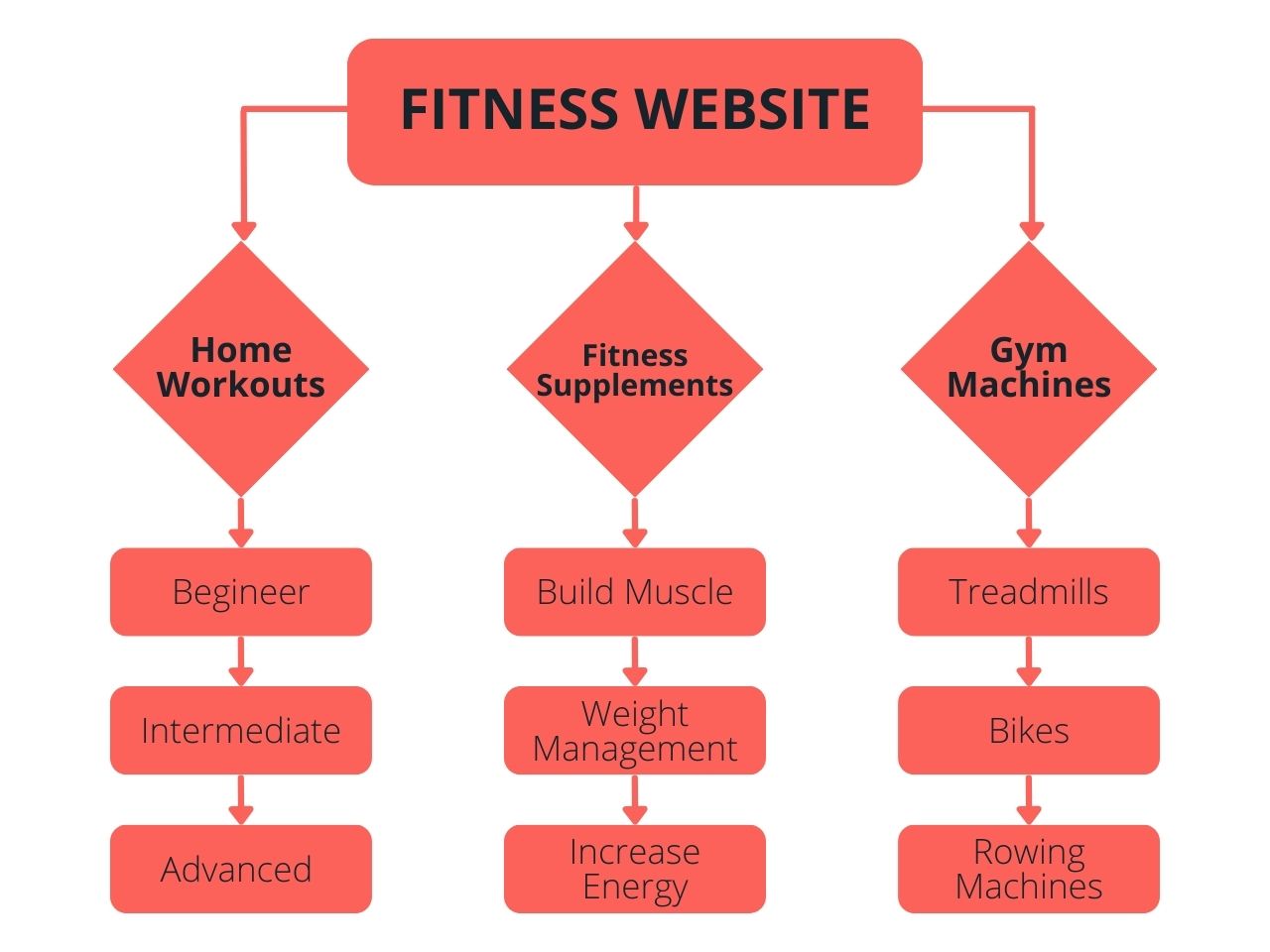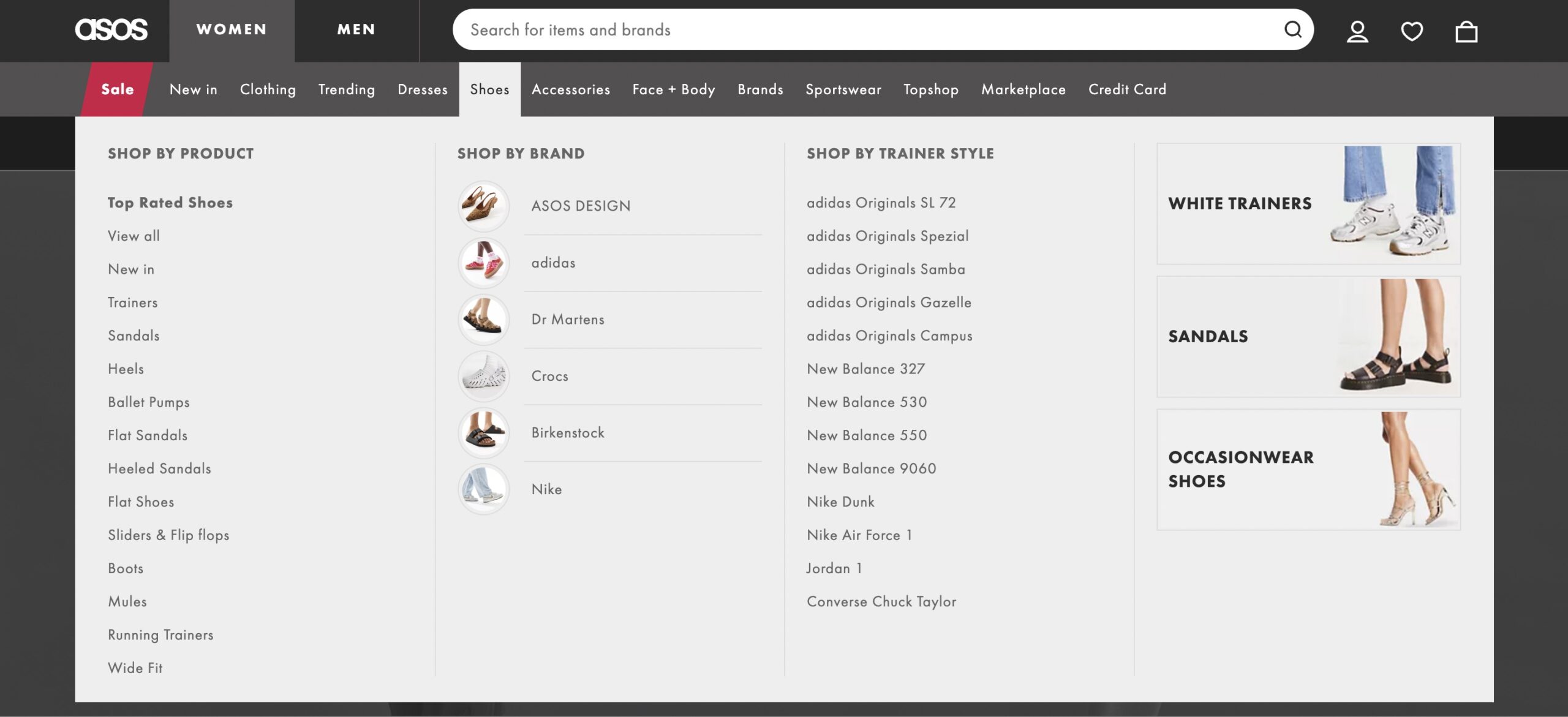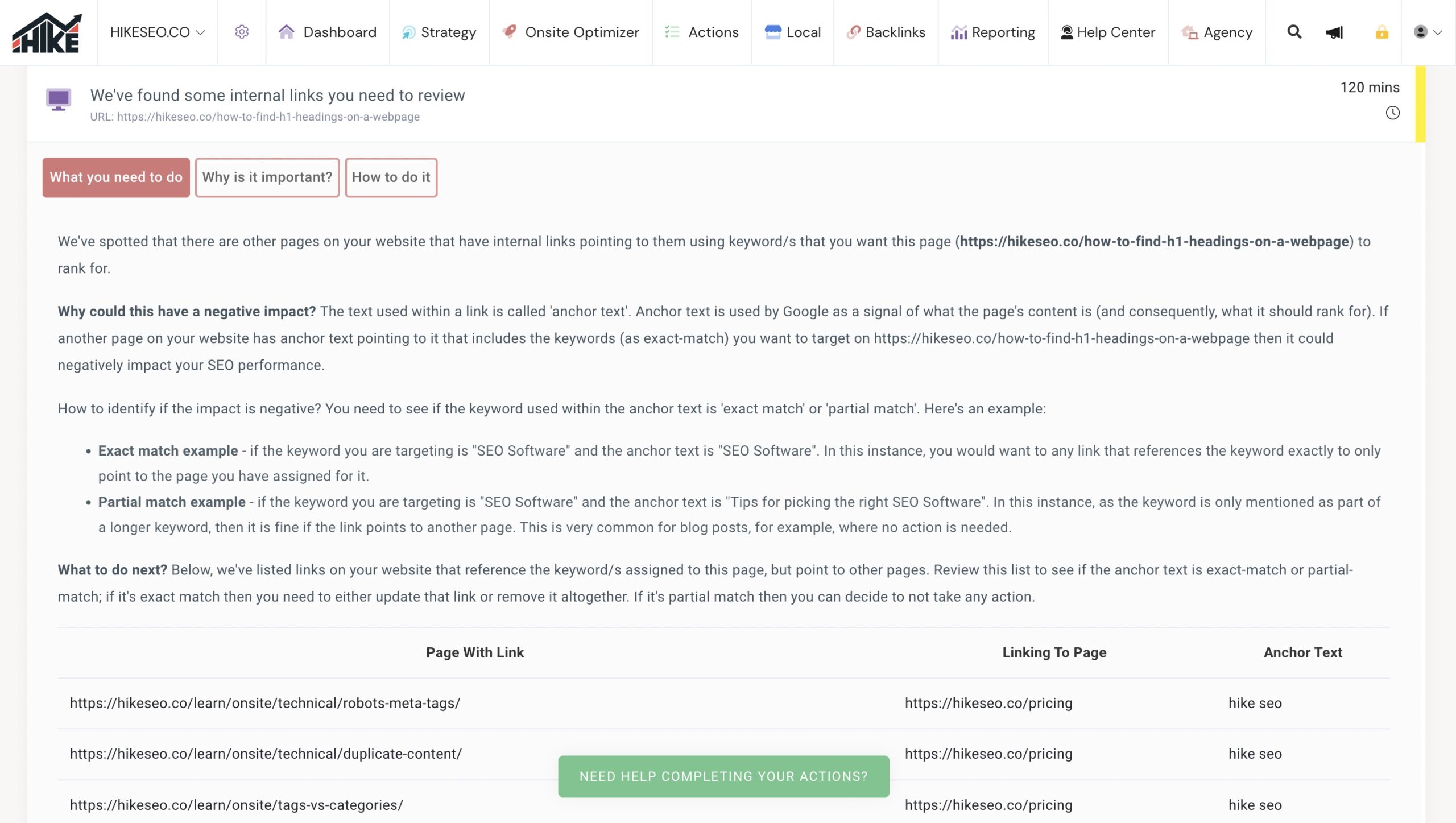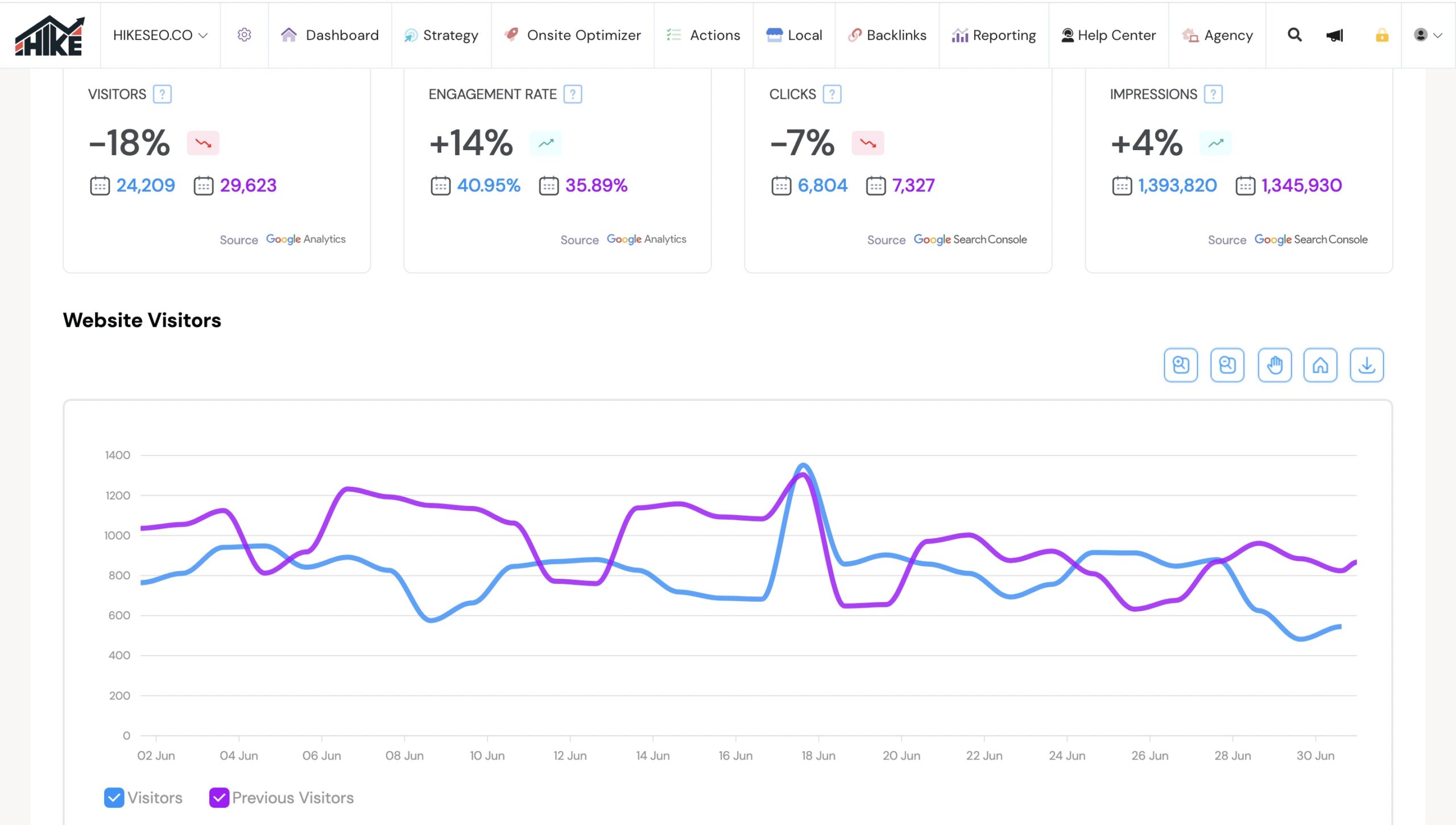Use Content Silos To Boost Your Content Strategy
Do you have a hard time coming up with a content strategy that provides the structure you need? Then consider looking into content silos for a proven approach to boost your SEO and elevate customer experiences while generating more sales through increased conversion rates.
Additionally, we’ll share the benefits of content silos and the best practices you can implement to hit the ground running. This gives you a chance to have the best content silos in your niche that don’t suffer from significant drawbacks.
Don’t have a blog and feel content silos aren’t relevant to your business? Then consider adding one. After all, businesses with blogs get 55% more traffic.
Below you can see an example Content Silo structure for a fitness website.

What Are Content Silos?
Content silos refer to the organization of website content into categorized sections or topics, which are often structured in a hierarchical manner. Webmasters typically create each section based on keyword research around particular themes.
For example, a website about fitness might have silos on home workouts, fitness supplements, top gym machines, and so on.
This approach helps to create clear and logical pathways for both users and search engines. The end result improves the user experience and search engine optimization. In the following section, we’ll cover the top reasons why content silos are commonly used by webmasters.
Top Benefits of Content Silos
Not sure if content silos are a worthy website structure to implement? Then consider the following benefits of content silos to decide if they are the right match for your website. You’ll see there’s a lot of upside that might be too good to pass up.
Better User Experience
Organize content into silos so users can navigate your website more intuitively and find relevant information quickly. This structured approach reduces the time users spend searching for content.
For example, on the ASOS website, you can see they use Content Silos in their navigation to help users navigate through their website easily.

Furthermore, clear pathways and related content groupings help users explore topics thoroughly, which leads to a more satisfying browsing experience. Also, improved navigation and accessibility can result in higher user retention.
Improved SEO Performance
The boost in user experience can lead to a lower bounce rate and a higher average session duration. These are positive signals that search engines pay attention to when ranking web pages.
Furthermore, content silos done well have an extensive amount of internal linking. This helps search engine bots crawl your website and spread link juice throughout your web pages.
Finally, content silos enhance SEO by creating clear and thematic groupings of content that help search engines understand the structure and relevance of your website. This organization can lead to higher rankings for target keywords as search engines can more easily determine the primary topics of your site.
Efficient Content Management
Content silos provide a clear framework for content creation, which allows you to focus on specific themes and topics. This targeted approach ensures that you cover each subject comprehensively by addressing all relevant subtopics and questions that users might have.
Here’s the knock-on effect of content silos on your content strategy:
Better Conversion Rates
Monitor your data analytics, and you may notice your conversion rates increase as a result of adding content silos. That’s because content silos enable more precise targeting and personalization of content for different audience segments. Therefore, by organizing content around specific themes, you can tailor your messaging and marketing strategies to address the unique needs and interests of each segment.
Competitive Advantage
With all other things being equal, you could experience an increase in sales, search rankings, and conversions compared to competitors. Therefore, adding content silos can be the difference that makes your website stand out in your niche.
This is especially true compared with websites that have a haphazard approach to content management. You can test the effect of content on your website by running a before and after test. Pay attention to the right key performance indicators to make the right conclusions.
Better Internal Linking
A well-structured content silo approach facilitates effective internal linking, which enhances the overall navigation and SEO of your website. That’s because internal links within silos help distribute page authority and guide users to related content.
Tools like Hike SEO are important for monitoring your internal links, and spotting weaknesses in your strategy. This ensures all corners of your website get an equal amount of attention.
Hike SEO in Action! An action generated by the platform to help us improve our internal linking strategy.

How Does a Silo Structure Help With the Buyer’s Journey?
The buyer’s journey is a process that takes casual visitors from the first time they interact with your brand to the end of the checkout process as paying customers. A well-crafted silo structure can move audiences along the buyer’s journey by helping them get the right answers.
For example, a user may want to understand the benefits and top use cases for your type of product. Content silos can deliver all the necessary information and nudge them towards product pages.
What’s the Problem With Content Silo’s
It’s important to understand the problems with content silos to have a blanched overview and set the right expectations. It empowers you to implement content silos in a way that overcomes these drawbacks. Here are the potential problems to consider:
Content Silo Best Practices
Now let’s turn our attention to the best practices you can implement to ensure your content silos are effective and help meet website objectives. However, this is just a starting point, and you’ll need to figure out more optimization strategies to get an edge over the competition.
Interlinking Between Silos
Use internal linking to connect related content within each silo and between them. This helps distribute link equity throughout your site and improves navigation. Also, effective internal linking aids search engines in understanding the structure and relevance of your content.
However, you must keep the user experience in mind when adding internal links. Make sure the links add value to the reader instead of adding them randomly. Also, don’t add too many links in a single article or section of a page. This detracts visually from the article and adds more clutter.
Segment Keyword Research into Themes
Start by identifying the core themes or topics that align with your business goals and audience interests. Each silo should focus on a distinct topic and allow you to create a comprehensive set of content around that theme.
Furthermore, clear themes help ensure that your content is relevant and valuable to your audience, which improves engagement and SEO. Hence, properly defining themes also helps in planning and structuring content. The end result is an easier time developing and maintaining a well-organized website.
Invest In an SEO Toolkit
Managing a content silo can be tricky without the right tools to help organize and optimize parts of the process. There are a bunch of free tools you can consider, such as the Google Search Console. This software solution provides a bird’s eye view of your website.
However, it lacks advanced features and customizability, which you can find at Hike SEO. For example, we offer an innovative Onsite Optimizer tool that cuts your SEO task time by around 50%.
Focus on High-Quality Content
Focus on producing high-quality, informative, and engaging content for each silo. This ensures that the content addresses the needs and questions of your audience. Furthermore, high-quality content not only attracts and retains visitors but also earns trust and authority in your niche.
It’s a good idea to mix formats like articles, videos, infographics, and case studies to keep the content dynamic and appealing. Also, consistently updating and improving your content helps maintain its relevance to current industry trends.
Monitor and Analyze Performance
Regularly monitor and analyze the performance of your content silos using tools like Google Analytics and Hike SEO. Furthermore, track metrics such as organic traffic, bounce rate, time on page, and conversions to understand how well your content is performing. Analyzing this data helps identify strengths and areas for improvement in your content silo structure.
Furthermore, use insights gained from performance analysis to refine your content strategy, update existing content, and create new content that better meets the needs of your audience.
Frequently Asked Questions
How do content silos benefit SEO?
Content silos benefit SEO by organizing content into thematic clusters, which makes it easier for search engines to understand and index the website. This structure enhances keyword relevance and internal linking. The end result improves page authority and search rankings.
Furthermore, clear pathways within silos guide users through related content, which increases engagement and reduces bounce rates.
Can content silos work for small websites?
Yes, content silos can work for small websites by providing a clear and organized structure, which is also true with limited content. Additionally, by focusing on specific themes and optimizing internal linking, small websites can enhance their SEO, improve user experience, and establish authority in their niche. This strategic approach ensures efficient use of resources and maximizes the impact of their content.
How do I create effective internal links within a content silo?
To create effective internal links within a content silo, you need to use descriptive anchor text to link related pages. Also, place links naturally within the content to enhance user experience.
Don’t forget to connect higher-level silo pages with subpages to promote comprehensive navigation. This strategy provides a natural pathway for users to travel deeper into your website.
How do I measure the performance of my content silos?
Measure the performance of your content silos using analytics tools like Hike SEO. You’ll need to track metrics such as organic traffic, bounce rate, time on page, and conversions. Then analyze user behavior within silos to identify strengths and areas for improvement.
An example of using Hike's reporting feature to analyse SEO performance.

Also, regular performance reviews help refine your content strategy and ensure your silos effectively engage users and boost SEO.
Should I use breadcrumbs in content silos?
Yes, using breadcrumbs in content silos is beneficial since they enhance navigation by showing users their location within the site's hierarchy. Hence, it’s easier to move between related content.
Furthermore, breadcrumbs improve user experience, reduce bounce rates, and help search engines understand your site's structure. All this improves your SEO and there are effective tools that can help you achieve this.
Can I repurpose existing content into a silo structure?
Yes, you can repurpose existing content into a silo structure. For example you can take a podcast and summarize the content into a post. However, you’ll need to start by categorizing and organizing content around specific themes or topics.
Furthermore, update and optimize the content for relevance and SEO, and establish internal links between related pages. When repurposing content it’s vital to take into account the SEO best practices.
How do content silos support future website growth?
Content silos support future website growth by providing a scalable framework for organizing content. Therefore, as you add new topics or expand existing ones, you can easily integrate additional content into the appropriate silos.
Hike SEO
In a nutshell, content silos are a legitimate way of structuring your website that’s even applicable to small businesses. Get it right with the tips in this article, and you’ll enjoy a boost to SEO, provide a better customer experience, and get more sales.
However, you need a top-tier SEO toolkit to fully optimize your content silo, and Hike SEO is the clear choice. Some of the top features you’ll enjoy at Hike SEO include competitor backlink analysis, keyword analysis, SEO audit tool, and much more.